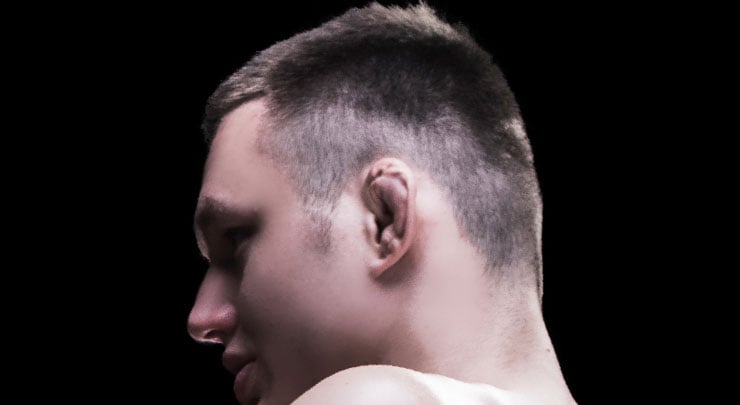
I don't want to get to the end of my life and find that I just lived the length of it. I want to have lived the width of it as well.
– Diane Ackerman

I don't want to get to the end of my life and find that I just lived the length of it. I want to have lived the width of it as well.
– Diane Ackerman
"Cauliflower ear" refers to a very specific deformity of the outer ear, almost always caused by blunt force trauma. This is usually from contact sports like boxing, wrestling, or martial arts.
he term, "cauliflower ear" comes from the distinctive resemblance to the vegetable the cartilage of the outer ear takes on following such an injury: bumpy and lumpy. If an injury to the ear is left untreated, a blockage can form, cutting off the flow of blood and nutrients and causing that trademark lumpy texture. Fortunately, most of these contact sports offer protective equipment that can prevent the injuries that cause cauliflower ear before they happen. Early treatment of the injury can also often prevent the appearance of the cauliflower shape in the first place. However, if the injury is persistent, there are available treatments to repair the damage

The most common cause of cauliflower ear is a hit, or repeated hits, to the ear. Aggressive friction is also a cause. This leads to small amounts of blood collecting and clotting, called hematomas. The hematoma blocks the flow of blood and much needed nutrients to the ear.
Cauliflower ear can also happen when the skin layer is pulled away from the underlying cartilage structure, which gives the ear its shape. Although these kinds of injuries are usually a result of contact sports, they don't have to be; any trauma to the outer ear can cause cauliflower ear. On rare occasions, cauliflower ear can even be a result of an infection in the earlobe or upper cartilage, especially after a poorly performed jewelry piercing.
When the blood flow to the ear cartilage is cut off, the tissue may die and fold in on itself. Scar tissue often forms, adding to the swollen and unnatural look. This swollen appearance can get worse over time if left untreated, to the point that it becomes permanent.
The best way to treat this sort of injury is to act immediately after it happens. Simply draining the fluid from the affected ear before it has a chance to clot is often all it takes to prevent the cauliflower ear deformity from occurring at all. If you find yourself in a position where you are unable to have the clot drained immediately, you should apply ice to the injury, and wrap your head and the affected ear to put pressure on it. Mild pressure on the ear right after injury can help reduce swelling and the chance of developing a hematoma. Once you have done this, it is still important to visit your doctor within 48 hours. Waiting any longer than two days may result in tissue death (necrosis) and the very deformity you are trying to avoid.
Unfortunately, the only initial symptom of an ear hematoma many people experience is slight swelling. Most people shrug if off, thinking that mild swelling isn't a serious concern. Regrettably, leaving it untreated at this initial stage often leads to a permanent deformity requiring otoplasty surgery to repair.
A delicate surgical procedure, otoplasty to repair cauliflower ears involves an incision made behind the ear which allows for the skin to be reflected off the front of the ear exposing the cartilage deformity. The malformed, fibrous scar tissue is then removed. Sometimes, depending on the severity of the injury and the extent of the scar tissue, the cartilage may be reshaped, or in rare cases, replaced with tissue from the ribs. The incision is then closed and sutured, leaving a small, unnoticeable scar behind the ear. The surgery usually takes between one and three hours depending on the complexity, and is usually performed with local anesthetic, though going under general anesthetic is also an option.
It is important that after the procedure is performed, your recovery is monitored as there is a chance that the cauliflowering reoccurs.
Just like with any sort of surgery, good candidates for otoplasty must be in good general health. Any diseases or conditions that affect the immune system have a high chance of negatively affecting recovery time, and increase the risk of post-operative complications.
In addition to the usual prerequisites of any surgical procedure, patients looking to repair cauliflower ears through otoplasty should no longer expect to suffer the kinds of injury that lead to this result. Basically, this means that if the injury was caused by participation in a sporting activity, any patient considering otoplasty needs to seriously consider ending their participation permanently. If you choose to continue the activity that caused the problem in the first place, your ears are just as susceptible to future damage, and the cauliflower ear may return.

The best way to deal with cauliflower ear and the injuries that cause it are to take measures to prevent it from happening in the first place. When participating in activities that carry a risk of ear injury, like boxing, rugby, or other close-contact sports, it is important to make sure you wear the proper protective equipment. And just as crucial as actually wearing a helmet, is wearing a helmet correctly. A helmet that is too loose might shift, leaving you open to injury. On the other hand, one that is too tight may damage your ears all on its own, especially if it is rubbed against your ears repeatedly as you put it on and take it off. Remember to wear your protective equipment during all practices as well as competition to best reduce your risk of injury.
Another important step in preventing cauliflower ear is to simply be aware of the risks involved with any physical activity you participate in. If you do suffer an injury to the outer ear, be sure to have a doctor evaluate it as soon as possible, even if it seems superficial. Remember, early treatment can often prevent the appearance of the unsightly cosmetic effect known as cauliflower ear.